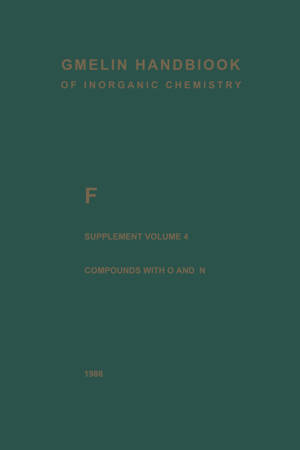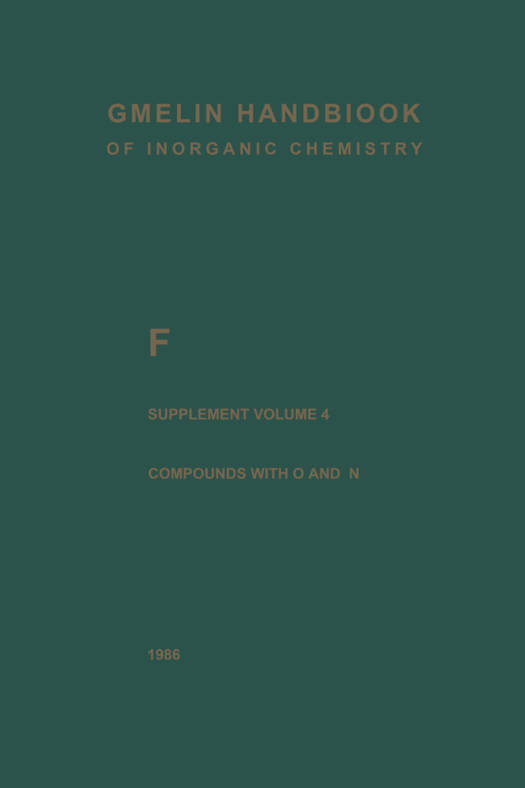
- Afhalen na 1 uur in een winkel met voorraad
- Gratis thuislevering in België vanaf € 30
- Ruim aanbod met 7 miljoen producten
- Afhalen na 1 uur in een winkel met voorraad
- Gratis thuislevering in België vanaf € 30
- Ruim aanbod met 7 miljoen producten
Zoeken
F Fluorine
Compounds with Oxygen and Nitrogen
€ 126,95
+ 253 punten
Omschrijving
The present volume, "Fluorine" Suppt. Vol. 4, covers the oxygen compounds of fluorine and the binary fluorine-nitrogen compounds. In the first part "Fluorine and Oxygen", oxygen fluorides OnF m are described in the order of decreasing F: 0 ratio. It finishes with a description of hyperfluorous acid HOF. The second part "Fluorine and Nitrogen" deals with the binary fluorine-nitrogen com- pounds. They are subdivided on the basis of the number of nitrogen atoms per molecule. Thus, species such as NFt, NF, NF, and NF are considered first followed by the dinitrogen and 3 2 trinitrogen fluorides NF, NF, and NF and related ions. 2 4 2 2 3 The other compounds under the heading "Fluorine and Nitrogen", the fluorine-nitrogen- hydrogen and the fluorine-nitrogen-oxygen(-hydrogen) compounds, will be covered in "Fluorine" Suppt. Vol. 5. Intense development in the field of inorganic fluorine-oxygen and fluorine"nitrogen chem- istry began in the middle of the 1950s when in less than a decade numerous previously unknown compounds and a great deal of new information were produced. Research in this field was strongly stimulated by interest in these compounds as potential high-energy oxi- dizers for rocket fuels. That is also the reason why much of the pertinent chemical information is found in patent Iiterature and U.S. Government contractor reports.
Specificaties
Betrokkenen
- Uitgeverij:
Inhoud
- Aantal bladzijden:
- 411
- Taal:
- Engels
- Reeks:
Eigenschappen
- Productcode (EAN):
- 9783662063415
- Verschijningsdatum:
- 3/10/2013
- Uitvoering:
- Paperback
- Formaat:
- Trade paperback (VS)
- Afmetingen:
- 178 mm x 254 mm
- Gewicht:
- 743 g

Alleen bij Standaard Boekhandel
+ 253 punten op je klantenkaart van Standaard Boekhandel
Beoordelingen
We publiceren alleen reviews die voldoen aan de voorwaarden voor reviews. Bekijk onze voorwaarden voor reviews.










